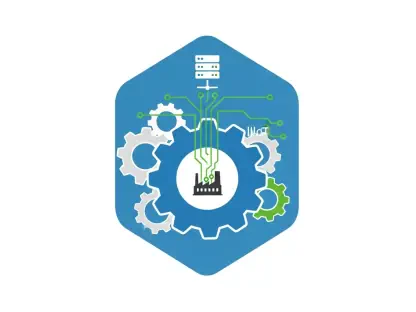In an era where food safety concerns are at the forefront of consumer and regulatory minds, a groundbreaking initiative has emerged to tackle a lesser-known but critical threat in the food manufacturing industry. Mineral Oil Aromatic Hydrocarbons, commonly referred to as MOAH, are potentially carcinogenic compounds derived from crude oil and petroleum that can infiltrate food through various channels like machinery lubricants and food contact materials. The presence of these harmful substances, especially those with three or more aromatic rings, poses a significant risk to public health. Recognizing this pressing issue, the National Sanitation Foundation (NSF) has introduced a pioneering MOAH-Free certification program aimed at minimizing contamination risks. This bold step not only addresses immediate safety concerns but also sets a new benchmark for trust and accountability in food production, paving the way for a safer supply chain across global markets.
Addressing a Hidden Threat in Food Production
The dangers of MOAH contamination have long lingered in the shadows of food safety discussions, but their potential impact on human health cannot be understated. These compounds can seep into food products through multiple sources, including processing aids, release agents, and even adhesives or coatings used in packaging. Once ingested, MOAH with specific chemical structures are suspected to cause severe health issues, prompting urgent calls for stricter controls. The NSF’s latest certification program directly confronts this challenge by establishing rigorous standards to ensure that food equipment materials and nonfood compounds are free from harmful levels of these substances. By setting a threshold of less than 100 parts per million (ppm) for MOAH content, the program provides a clear and measurable target for manufacturers, ensuring that consumer safety remains a top priority in every step of the production process.
Beyond simply identifying the problem, the initiative delves into the practicalities of prevention and compliance. Manufacturers seeking certification must demonstrate that no harmful mineral oils are intentionally added during production and that robust measures are in place to prevent accidental contamination. This includes thorough testing and verification processes grounded in NSF Certification Guideline 538, which outlines specific protocols for both nonfood compounds and food equipment materials. Additionally, prerequisites such as registration with NSF or adherence to international standards like ISO 21469 are mandatory, ensuring a comprehensive approach to safety. This certification not only acts as a shield against health risks but also as a signal to regulators and consumers alike that the industry is committed to transparency and accountability in addressing hidden contaminants.
Building Trust Through Rigorous Standards
The introduction of the MOAH-Free certification comes at a time when global awareness of food safety is reaching new heights, particularly in regions like Europe where stringent limits on MOAH are already enforced. This program positions manufacturers to stay ahead of regulatory curves by proactively aligning with the highest safety standards. Samuel Cole, NSF’s global director of food contact evaluation, has highlighted the dual benefit of this initiative, noting that it not only facilitates compliance but also drives innovation by offering a clear framework for verifying product safety. For food producers, this certification serves as a powerful tool to communicate their dedication to consumer well-being, fostering trust in an increasingly discerning market. It transforms a complex technical requirement into a tangible badge of credibility that can resonate with stakeholders across the supply chain.
For manufacturers of nonfood compounds and food equipment materials, the benefits extend even further into competitive and reputational realms. Achieving MOAH-Free certification provides a distinct market advantage, especially in regions with strict safety mandates, by showcasing a commitment to excellence. It reduces the risk of contamination during production, thereby safeguarding both the end consumer and the manufacturer’s brand integrity. Moreover, the program aligns with broader industry trends toward sustainability and safety, reflecting a unified push for higher standards. As part of a larger effort by NSF, which also includes initiatives like the PFAS-Free certification under Guideline 537 to address other harmful substances, this program underscores a holistic approach to tackling contaminants. The ripple effect of such certifications is profound, encouraging a culture of continuous improvement and vigilance in food safety practices worldwide.
Paving the Way for Safer Futures
Reflecting on the strides made, the launch of NSF’s MOAH-Free certification marked a turning point in the battle against harmful contaminants in food production. It established a robust framework that empowered manufacturers to mitigate risks associated with MOAH, ensuring that consumer health remained paramount. The program’s stringent testing and prevention measures set a precedent for how the industry could proactively address emerging threats, while also enhancing trust through independent verification. Its alignment with global regulatory trends further solidified its role as a cornerstone of modern food safety protocols, bridging the gap between compliance and consumer confidence.
Looking ahead, the focus shifts to how stakeholders can build on this foundation to address evolving challenges in the food supply chain. Manufacturers are encouraged to integrate such certifications into their long-term strategies, using them as a catalyst for innovation in safer production methods. Collaboration between industry players, regulators, and certification bodies will be essential to expand the reach of these standards, ensuring that even smaller producers can access the tools needed to comply. As new contaminants and risks emerge, the lessons learned from this initiative can guide the development of future safety measures, fostering a resilient and responsive food industry that prioritizes the well-being of every consumer.









